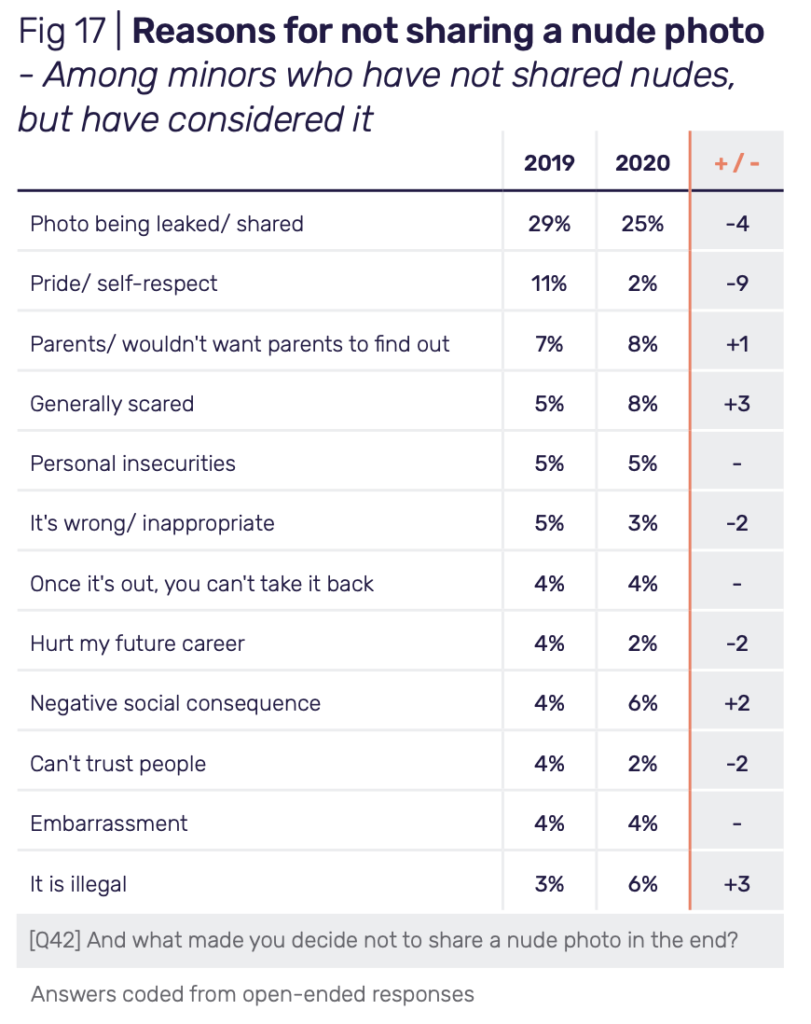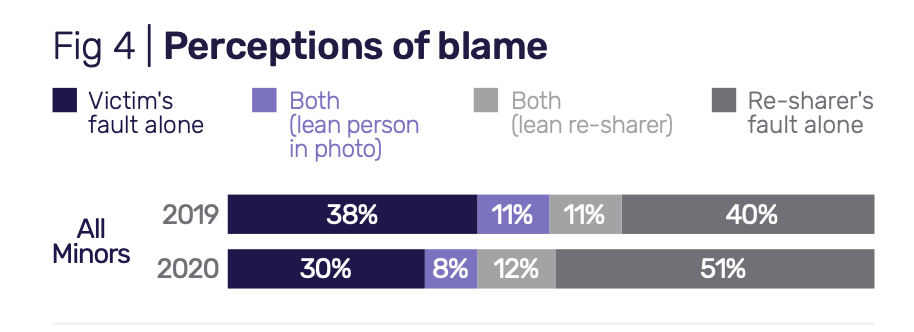“Sending Nudes:” What are Kids’ Behaviors and Perceptions?

Online trends shift faster than they can be tracked and studied, especially since COVID-19 began. Some of the most helpful research in recent years has been conducted by Thorn, a nonprofit working to eliminate online child sexual abuse. They have now released 2 reports on youth behaviors and attitudes related to self-generated child sexual abuse material (SG-CSAM), or what is informally known as “sending nudes.” Below we summarize some of the valuable findings from their reports, which documented attitudes and behaviors in 2019 and 2020.
We encourage readers to check out the full report, where data is presented in two age ranges (9-12, 13-17) for more precision.
Summary Findings:
“…(1) sexting is becoming viewed as a “normal” activity among peers; (2) coercion plays a critical role and exponentially increases risk to the victim; and (3) attitudes of blame and shame can compound the harms of online threats and unintentionally isolate young people.
Specific Data Points:
% of minors (9-17) who agree it is normal for kids their age to “share nudes”.
2019: 27%
2020: 28%
Note: while the combined total remained steady, younger youth showed a significant increase while teens showed a slight decrease.
% of minors (9-17) who have shared their own explicit image
2019: 11%
2020: 17%
Note: Both age ranges (9-12 and 13-17) showed increased sharing, with reports from 9-12 yr. Olds more than doubling (from 6-14%)
Largest increases in production and sharing of images:
% of 9-10 yr. Old who have shared their own image
2019: 3%
2020: 15%
LGBTQ+ Youth:
2019: 21%
2020: 32% (almost 2.5x more likely than non-LGBTQ+ youth)
Among youth who have sent a nude photo or image (2020 data):
50% sent images to someone they had never met offline
41% sent images to someone over the age of 18
Rates of sharing nude images and videos by household income (2019 data only):
<$50k: 9%
$50k – $75k: 10%
$75k – $100k: 15%
$100k – $150k: 17%
>$150k: 25%
Note: There is a possible link between household income and experience with sharing nudes, with a trend of increased sharing with higher household income.
Reasons why youth who considered sending a nude image or video decided not to:

Note: When speaking with kids and developing curriculum, speaking to youth concerns is essential. For example, the illegality of image sharing is shown to not weigh heavily on their minds, and therefore may not be the best primary emphasis.
Perceptions of blame when a nude has been re-shared with broader audience:

Note: This is encouraging data that suggests that education around coercion and non-consensual sharing is having an impact. The less shame attached to these situations, the better able kids are to get help.
Taken together, these and other data points paint a complex and shifting picture of youth attitudes and behavior. While the details fluctuate, kids’ sense of “a new normal” seems to hold steady. As we continue to work to keep them safe and raise informed digital citizens, keeping up with their experiences and views is essential to effective communication.